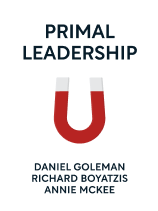

This article is an excerpt from the Shortform book guide to "Primal Leadership" by Daniel Goleman. Shortform has the world's best summaries and analyses of books you should be reading.
Like this article? Sign up for a free trial here .
Do you want to know how to improve emotional intelligence? How can you use self-directed learning to achieve this goal?
Probably the most important trait a leader can have is emotional intelligence. It’s so important because a leader who is in tune with both her and her team member’s emotions can create a harmonious work environment—which leads to success.
Here are the five steps you can take to improve your emotional intelligence level.
Increasing Emotional Intelligence
Emotional intelligence (EI) is the ability to understand and manage our own emotions while also being able to understand and influence the emotions of others.
The authors of Primal Leadership explain that emotional intelligence (EI) is something anyone can learn as long as they’re motivated, committed, and put in a solid effort.
The most effective technique to learn EI is self-directed learning, a model that allows individuals to develop personalized goals, learning plans, and measures of achievement. The model lays out five steps that individuals must go through to acquire a new skill—in this case, increased EI.
In the sections below, we’ll discuss each of the five steps to improve emotional intelligence.
| The Flaws of Self-Directed Learning Self-directed learning is a recognized education method that has roots in Ancient Greek schooling, emphasizing a student’s self-directed planning and evaluation of their learning process. While the authors present self-directed learning as a sure-fire method to gain emotional intelligence, some management experts say it’s not so easy—despite the fact that self-directed learning is supposed to foster motivation and commitment, experts explain that the method isn’t always enough to keep busy bosses on track. For example, if organizations encourage leaders to take on the self-directed learning process but then leave them to figure the rest out on their own, the stresses of work and home life may outweigh their desires to work on new skills in their downtime. To avoid this outcome, experts recommend that organizations support individuals throughout the learning process, answering questions and giving advice or direction, providing learning materials and libraries, and giving leaders opportunities for hands-on practice with their peers. |
Step 1: Identify the Leader You Want to Be
The first step in becoming an emotionally intelligent leader is to imagine the ideal version of yourself as a leader—which microskills do you want to possess and which leadership styles do you want to excel at?
To do this, the authors suggest imagining the leader you want to be in 10 years. Who’s around you? How do your followers feel about you and how do you feel about them? What’s the environment and emotional climate like? How do your interactions create harmony?
Further, the authors warn against creating goals based on what other people want or expect from you. Other people’s standards provide extrinsic motivation (motivation driven by external rewards) rather than intrinsic (motivation driven by internal satisfaction), undermining the purpose of self-directed learning and making you less likely to succeed.
| Visualization Can Help You Manifest Your Goals The authors explain that imagining the leader you want to be in 10 years will help you identify your learning goals. Many experts claim that this visualization process can go further and actually help you manifest your goals as well. In other words, simply imagining yourself achieving your goals can bring them to fruition. In Think and Grow Rich, Napoleon Hill argues that we can achieve any goal through visualization, or what he calls “autosuggestion.” To do this, imagine that you’re already in possession of your goal. Similar to the authors’ suggestion, Hill says to imagine who you’re with, how you feel, where you are, and how you’re interacting with people once you’ve accomplished your goal. Then, let this vision come to life in your head for a few minutes every day—imagine yourself conducting daily life as this person. The more you do this, the more you will become this person in real life. Further, Hill says that for the visualization process to be effective, your goal must be an “all-consuming desire.” Like the authors, Hill explains that this desire must be your own, not someone else’s, and you must fully dedicate yourself to achieving it. |
Step 2: Identify Your Current Leadership Competencies
Once you’ve identified the leader you want to be, you must examine the leader you are. Identify which of the main skills and microskills you rely on so you can identify the gaps between your ideal and current self—these are the areas you can improve.
To discover your current leadership, reflect on your strengths and weaknesses in the four main skills of EI: self-awareness, self-management, social awareness, and relationship management.
Also, consider which of the six leadership styles you rely on most frequently, and then examine which microskills they use. For example, a coaching leader relies on the ability to help people reach their goals and cultivate their abilities.
Finally, explore which leadership styles you lack and which microskills you need to improve on to master that style.
(Shortform note: In Goals!, Brian Tracy lays out a twelve-step process that will help you achieve any goal. One of these steps is to assess your starting point. Like the authors, he explains that before you can create a plan and get to work, you need to understand your strengths and weaknesses and where you’re starting from. Without this self-assessment, you may be unaware of the barriers that are hindering you from success and the areas you need to improve on.)
The authors warn, however, that our self-analysis can often be inaccurate because our ego causes us to see a positively-skewed image of ourselves. To overcome this distortion, they recommend seeking negative feedback from people who know you well and who interact with you on a regular basis. Ask them to judge your microskills in each of the four main EI skills. You can make this an anonymous survey so no one fears retribution and can respond honestly.
| Blind Spots Can Lead to an Inaccurate Self-Assessment In Thanks for the Feedback, Douglas Stone and Sheila Heen add to the authors’ argument, explaining that one of the reasons people aren’t good at accurately self-assessing is because of our “blind spots”—behaviors that we see as unimportant or don’t notice but that other people see as disruptive or obvious. Consequently, receiving feedback from others is the most accurate way to self-assess. For example, when we have an emotional reaction to a situation, it might seem much more intense to others than it does to us. Or, we may roll our eyes when we hear something we think is silly without realizing we’re doing it. While we think we might be very good at understanding and controlling our emotions and impulses, others might have a very different perspective because of the behaviors that exist in our blind spots. |
Step 3: A Practical Plan for Improvement
Now that you know what you need to improve on, you should create a learning plan that’ll help you gain the skills and microskills you lack.
The authors recommend that for your learning plan to be most effective, you should choose goals that align with your strengths and that are realistically achievable.
The authors also say to create tasks that focus on learning rather than meeting benchmarks. For example, a learning goal like “practice sharing an inspirational vision with a peer twice a week” will be more effective to improve inspirational competencies than a benchmark like “present an inspirational vision at the board meeting by next month.” Ultimately, focus on the learning process rather than the outcome.
| SMART Goals, an Alternative Approach to the Learning Process Another popular strategy recommended by experts for creating achievable goals is the SMART method. S: Make your goals specific—identify the specific microskills you want to improve on and what improving in these areas would look like. M: Make your goals measurable—what does it look like when you’ve achieved your goal? For example, you could set a benchmark like “be able to sell my product to the board at the next meeting.” A: Make your goal attainable—are you giving yourself ample time to complete your goal and do you have the resources necessary? R: make your goal realistic—is this goal something you are motivated to achieve? T: make your goal time-specific—when do you want to achieve your goal? The SMART plan both supports and contradicts the authors’ suggestion. They both recommend making your goals specific (identifying the skills and microskill you need to work on), attainable, and realistic. However, the authors don’t address a time limit and disagree with “measurable” goals like benchmarks. Further, the authors recommend focusing on your strengths when designing your goals—for example, if you’re good at self-awareness but weak in relationship management, you might approach interactions with others with an attitude of being aware of their needs—while the SMART plan asks you to focus on your weakness when choosing goals. |
Step 4: Develop New Habits
Next, the authors recommend identifying areas in your life where you can regularly practice your new skills so they override your old habits. To make this change, acknowledge your bad habit, consciously practice a skill to replace it, and use that new skill at every opportunity until it becomes an automatic response.
For example, if you realize you need to replace defensiveness with emotional self-management, you can commit to pausing before you respond to questions to make sure you fully understand the other person’s perspective and can formulate a genuine, non-hostile response.
It’s necessary that you practice new EI skills because to override old habits and build new ones, your brain needs to create new neural pathways, and these pathways can only be formed through repeated action.
(Shortform note: In Awaken the Giant Within, Tony Robbins calls this process of rewiring our brains neuro-associative conditioning, or NAC. He explains that there are six steps to successfully rewiring your brain: (1) identify your goal and what’s getting in the way, (2) create a sense of urgency to change, (3) disrupt your usual pattern, (4) create a positive pattern to replace the old one, (5) reinforce your new pattern, and (6) make sure your conditioning is successful. Ultimately, these are the same suggestions made by the authors but broken down into more descriptive steps.)
Step 5: Develop Supporting Relationships
While this is the last step, the authors recommend that you develop supporting relationships throughout the learning process. These relationships should be with people who’ll help and encourage you to accomplish your goals.
The authors argue that these relationships are especially beneficial with a mentor or coach who has expertise in your field, can understand the barriers you face, and can give you feedback on your progress. For a supporting relationship to be effective, they note you must trust the other person, feel safe disclosing personal information to them, and be able to be honest with them—the authors call these elements trust, psychological safety, and candor.
(Shortform note: The authors don’t go into much detail about what trust, psychological safety, and candor look like in a relationship. Experts provide a more complete picture: In supporting relationships, you and the other person feel comfortable asking each other for advice, follow each other’s recommendations, respect each other, forgive each other for mistakes, and are usually involved in each other’s personal development.)

———End of Preview———
Like what you just read? Read the rest of the world's best book summary and analysis of Daniel Goleman's "Primal Leadership" at Shortform .
Here's what you'll find in our full Primal Leadership summary :
- Why emotional intelligence is the most important trait for a leader
- How you can boost the emotional intelligence of your group or organization
- How to create a learning plan that’ll help you gain the skills and microskills you lack






